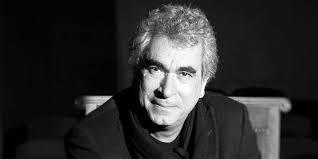The piece was commissioned by Aix en Provence Easter festival 2020 and was written for the Voce Quartet and my firend the composer David Hackbridge Johnson. It is an homage to Beethoven. The concert was cancelled for sanitary reasons.
In Italian serio means serious and serioso, severe or pedantic. These last two adjectives have nothing to do with each other, but they are very similar in terms of music. Indeed, the severe style is the other name for the contrapuntal style which finds its culmination in the Fugue. My Quartet No. 11 begins with the same tempo indication as Beethoven's, Allegro brioso, and with four sixteenth notes (F-G-Lab-G) forming the beginning of the incision of the first theme of the Beethovenian opus, but the reference ends there. No other allusion to gestures from Beethoven's quartet will be found. Unthinkable in Beethoven's time, caught between the classical era, which had put counterpoint on the back burner and the new Romantic era, which intended to put affect at the centre of its concerns, it seemed to me that our era, despite its modernist orthodoxy, could witness such an experiment.
This work, however, does not consist in presenting the listener with two preludes and fugues as they might have been offered in a Bach collection. I have sought to create a form that is closer to the classico-romantic profile that made the lively first movement, the slow second movement and the moderate (or fast) Finale the ideal of a formal balance that has been attempted many times since C.P.E. Bach. A form that gives the impression of a triptych, therefore, whereas here it obeys a tetralogical logic, since two preludes and two fugues form four 'panels' of writing and not three. To do this, I gave the first Prelude and Fugue a synthetic Allegro feel, where prelude and fugue follow one another, presenting music of the same character. Then I composed a slow movement of about four minutes (the second Prelude) which is followed by music of a different character (the second Fugue) which concludes the work and lasts about five minutes. As in my previous works, there are thematic motifs that metamorphose from movement to movement. Without going into detail, it is important to note that the subject of the first (fast) fugue, presented at bar 44, is transformed, treated as a rhythmic augmentation in the slow movement, into a lyrical lament (Adagio lamentoso) and forms the basis of theme A of the ABA-form (Lied-form) which constitutes this movement. The counter-subject of the first fugue, played by the second violin at bar 47, will be used as theme B in the same slow movement and will also become the subject of the final fugue, Andante appassionato, which completes this work, which I wanted to be both tonal and very dissonant, on a D major chord.
Composer: Nicolas Bacri

Born in november 1961, Nicolas Bacri is one of France's most frequently performed and recorded composers.
After a period marked by highly polyphonic atonalism (his First Symphony op. 11 from 1984 is dedicated to Elliott Carter) his interest in the musical past is an earnest, and constantly renewed exploration of his own musical mind. His music changed its language but the message remained the same. It conveys us in a recovery, or more explicitely, a refoundation from pure twenty-century music to twenty-first, unashamed of its traditional based roots. The composer of one hundred and fifty works in many genres, he has received such recognition as Prix de Rome (two years scholarship, Villa Medici, 1983-85), Grand Prix de la Musique symphonique 2006 (S.A.C.E.M.).
Recent important commissions have come from Philadelphia Chamber Music Society, Chicago Symphony Orchestra, WDR Sinfonie Orchester-Köln, Festpielhaus Baden-Baden, French Ministry of Culture, Radio-France, Alte Oper Frankfurt, Tapiola Sinfonietta, Pro Quartet.. From the 1990's onward he continued to explore all possibilities offered by "the sudden or progressive irruption of modernity in tradition and vice-versa". His catalogue includes seven symphonies, concertos for two pianos, violin (4), cello, flute, clarinet (2), trumpet (2), Les Quatre Saisons (four concertos for oboe, violin, viola, cello and strings) and numerous other concertante works amongst Une Prière (RCA BMG Red Seal).